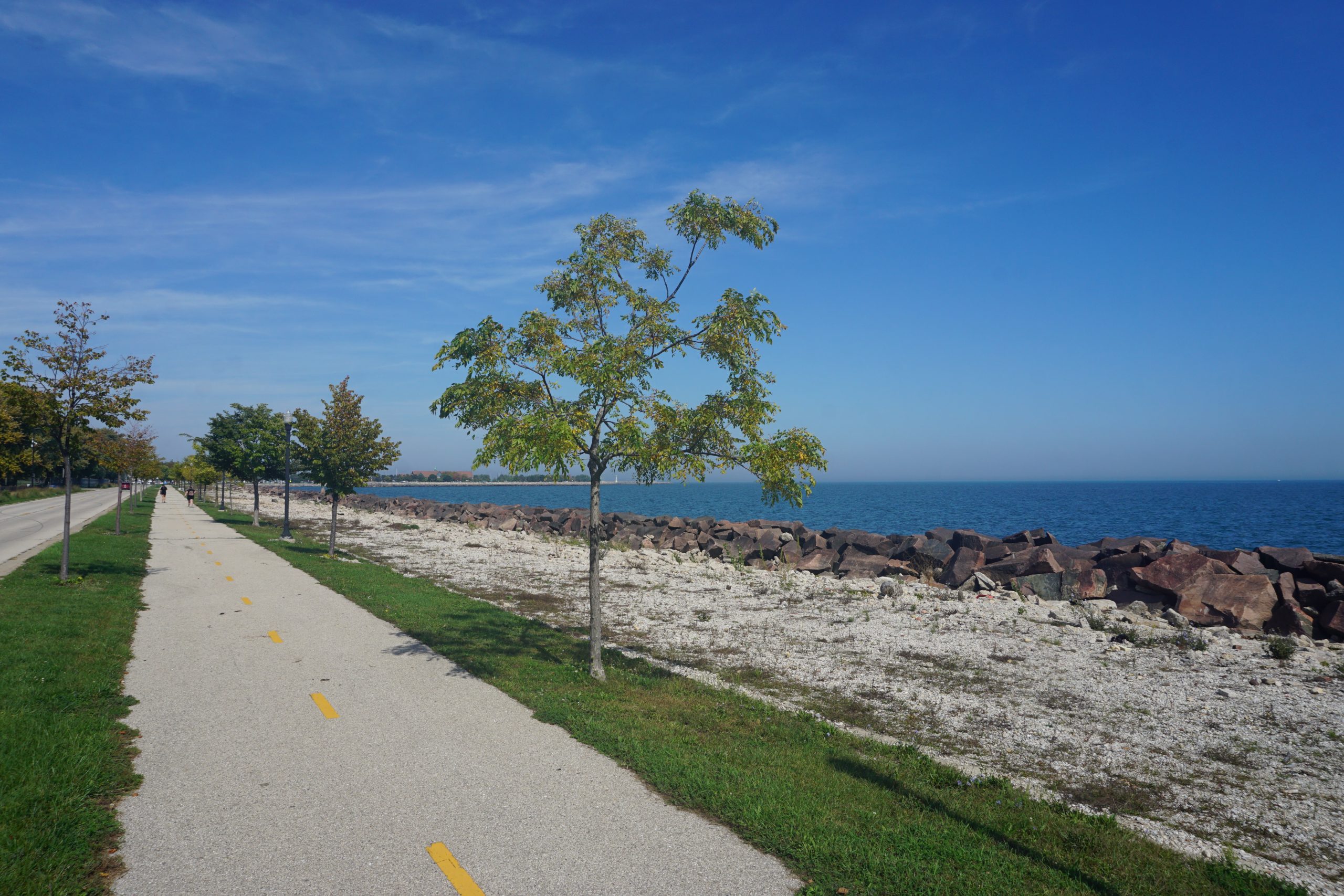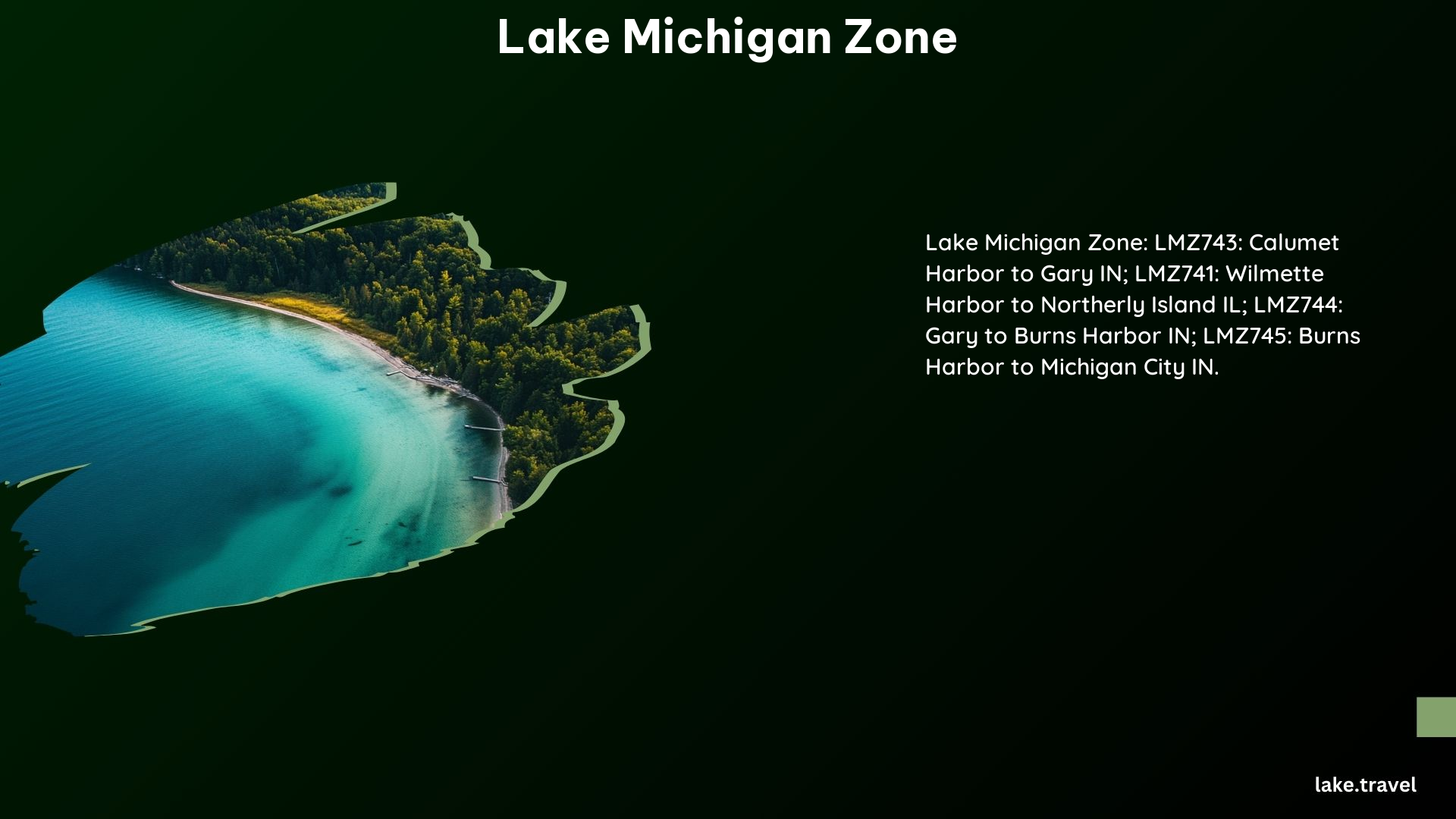Lake Michigan is a vast and complex body of water, divided into several distinct zones, each with its own unique characteristics and purposes. As a lakes touring enthusiast, understanding these zones is crucial for navigating, exploring, and appreciating the full breadth of this Great Lake.
The Lake Zone (Littoral Zone)

The Lake Zone, also known as the Littoral Zone, is the shallow area of Lake Michigan where sunlight can reach the bottom, allowing aquatic plants to thrive. This zone is essential for the lake’s ecosystem, providing food, shelter, and breeding grounds for a wide variety of fish and wildlife. The size of the Littoral Zone can vary depending on factors such as the lake’s size, shape, and water levels.
Nearshore Zones

The Nearshore Zones of Lake Michigan are the areas closest to the shoreline, and they are further divided into smaller zones for marine forecasting purposes by the National Weather Service (NWS). These zones are identified by text descriptions and Universal Generic Codes (UGCs), and the NWS issues nearshore marine forecasts for these areas, providing valuable information for boaters, anglers, and other recreational users.
Open Lake Forecast Zones
In addition to the Nearshore Zones, the NWS also issues open lake forecasts for Lake Michigan, which are subdivided into zones. These forecasts include a synopsis and MAFOR (Marine Forecast) and are available via email and online, helping users plan their activities on the open waters of the lake.
Upland, Buffer, Shoreline, and Lake Zones
These zones are crucial for shoreland property management and maintaining the health of the Lake Michigan ecosystem. The Upland Zone is the area set back from the lake, the Buffer Zone is the first 35 feet of the lakefront property, the Shoreline Zone is the transition area from water to land, and the Lake Zone is the Nearshore area or Littoral Zone.
Understanding these zones is essential for a variety of stakeholders, including:
-
Ecosystem Managers: These zones are crucial for maintaining the delicate balance of the lake’s ecosystem, ensuring the health and sustainability of the diverse flora and fauna that call Lake Michigan home.
-
Recreational Users: Boaters, anglers, and other recreational users can benefit from understanding the different zones, as they can plan their activities accordingly and stay informed about weather conditions and forecasts.
-
Shoreland Property Owners: Homeowners and businesses with lakefront property can use these zone designations to manage their land in a way that protects the lake’s health and complies with local regulations.
-
Researchers and Scientists: Academics and researchers studying Lake Michigan can use these zone designations to better understand the lake’s dynamics, from its physical characteristics to its biological processes.
By exploring the diverse zones of Lake Michigan, lakes touring enthusiasts can gain a deeper appreciation for the complexity and importance of this Great Lake. Whether you’re a boater, angler, or simply someone who enjoys the beauty of Lake Michigan, understanding these zones can enhance your experience and help you become a more informed and responsible steward of this precious natural resource.
Key Takeaways
- Lake Michigan is divided into several distinct zones, each with its own unique characteristics and purposes.
- The Lake Zone (Littoral Zone) is the shallow area where aquatic plants can grow, providing essential habitat for fish and wildlife.
- The Nearshore Zones and Open Lake Forecast Zones are used for marine forecasting and planning recreational activities.
- The Upland, Buffer, Shoreline, and Lake Zones are important for shoreland property management and maintaining the health of the lake’s ecosystem.
- Understanding these zones is crucial for a variety of stakeholders, including ecosystem managers, recreational users, shoreland property owners, and researchers.
By exploring the diverse zones of Lake Michigan, lakes touring enthusiasts can gain a deeper appreciation for the complexity and importance of this Great Lake, and become more informed and responsible stewards of this precious natural resource.
